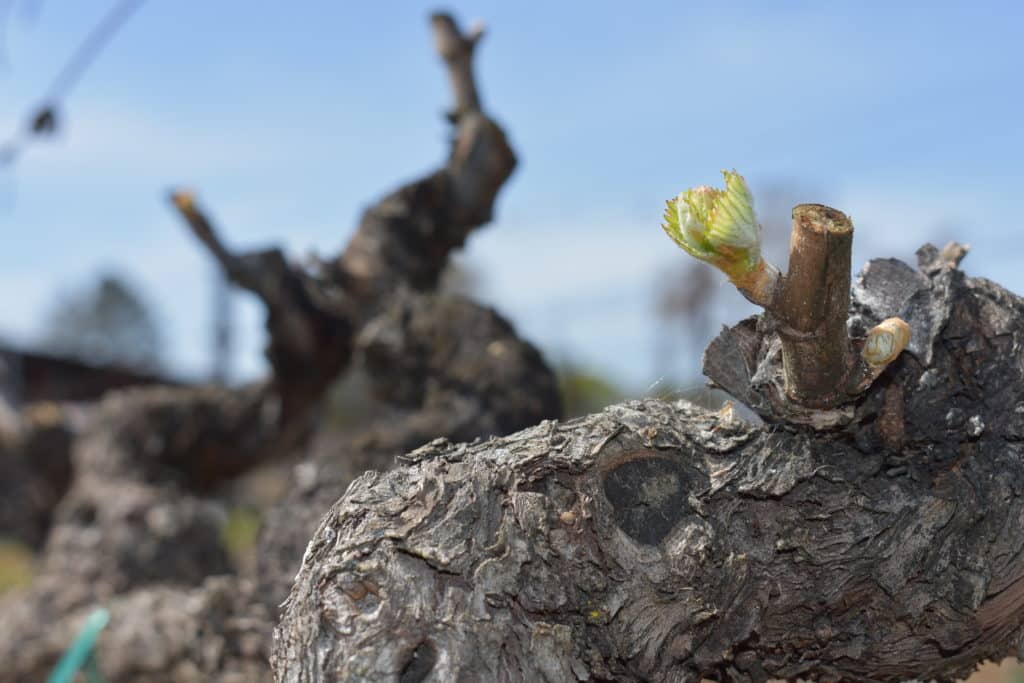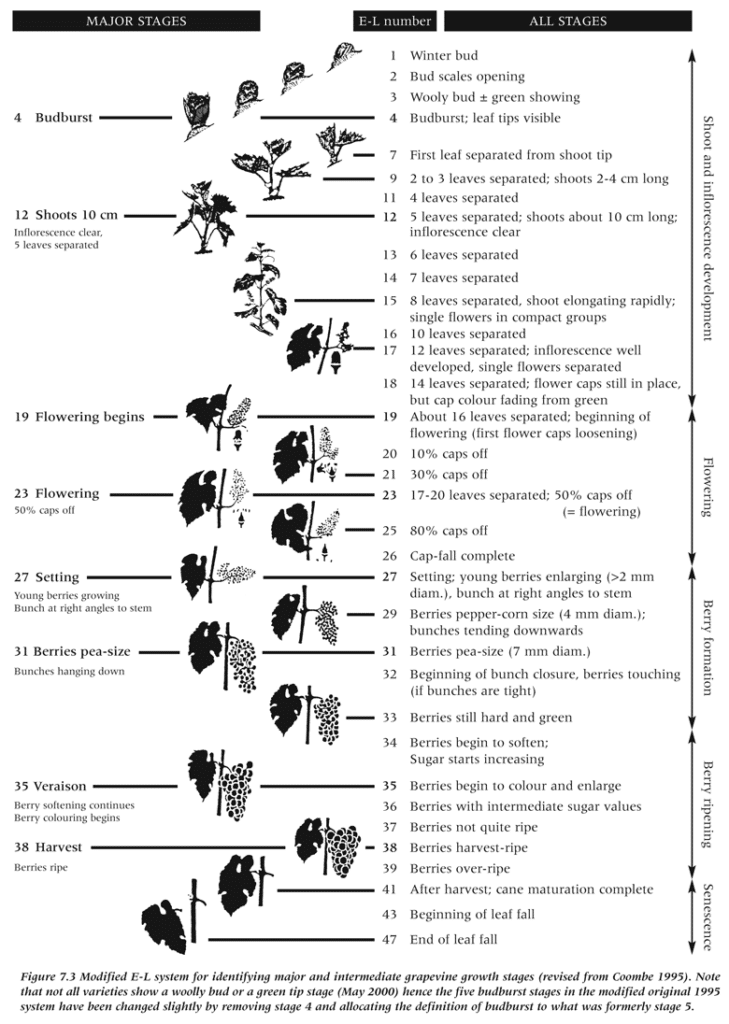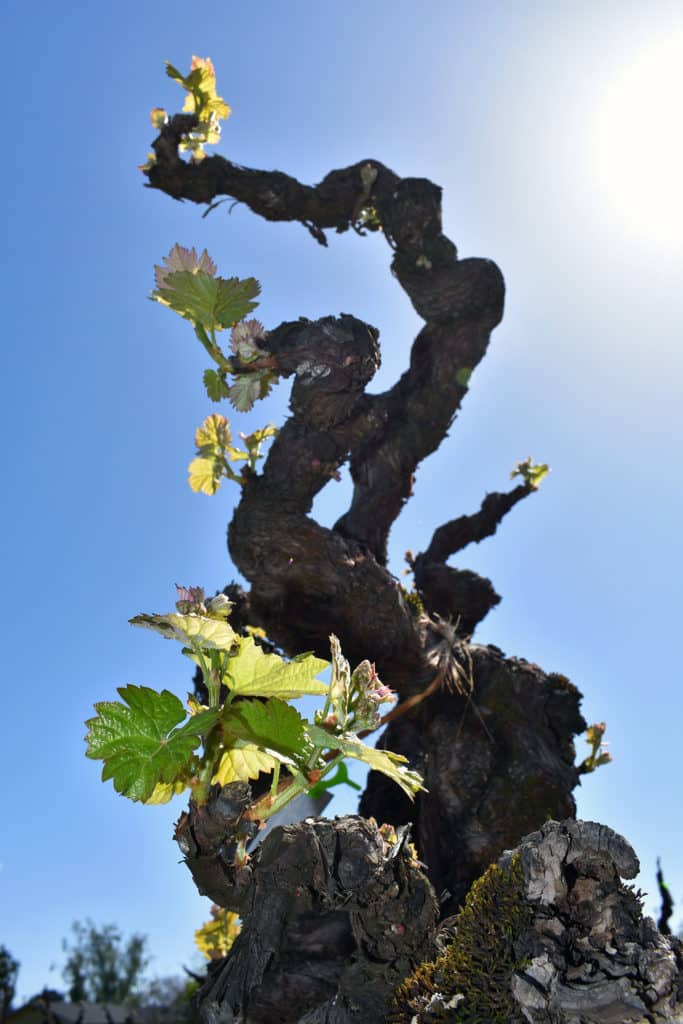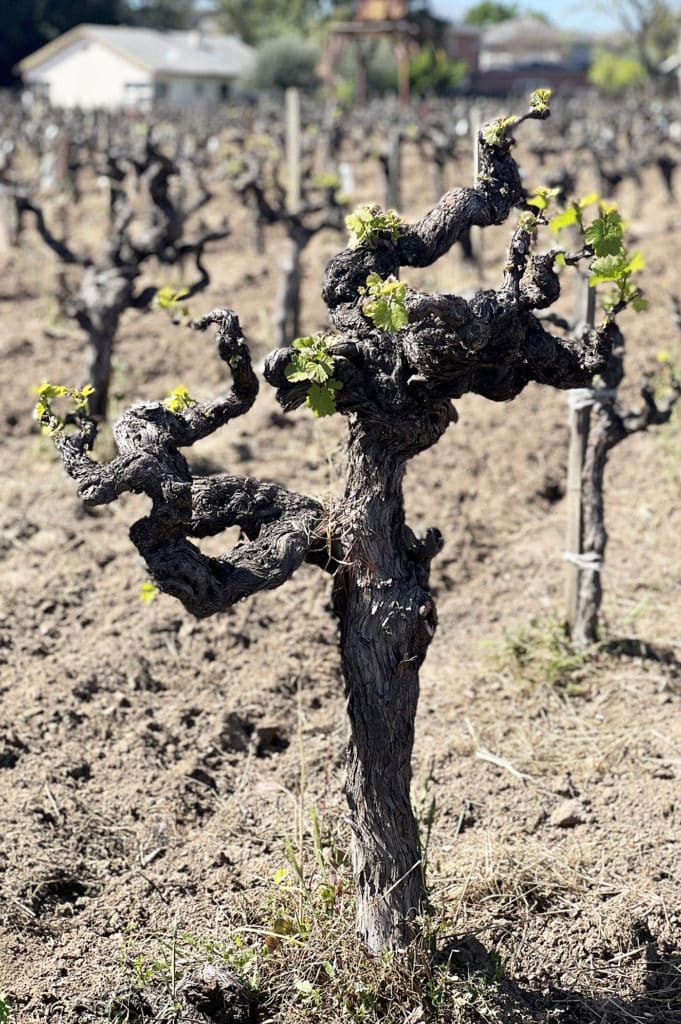
Bud Break at Oak Knoll District
With the beautiful, spring weather that has been graced upon us, we are starting to see bud break take place at our Oak Knoll District winery. What exactly IS bud break? It is generally defined as “the appearance of green tissue through the bud scales” (Creasy and Creasy 2009) or “the emergence of a new shoot from a bud during the spring” (Coombe and Dry 2005). This first stage is a crucial part of the phenological development of a vine, though varieties display bud break differently.
There are vines that exhibit bud break with visible green tips and some that emerge as hair-covered cones without green tissue. The Eichron-Lorenz (E-L) System (chart below), however, is uniformly used as a guide by winemakers and growers alike to help recognize the key stages of a grapevine’s lifecycle.
In the Northern Hemisphere, bud break typically occurs from March to April while in the Southern Hemisphere, bud break takes place between September to October. But depending on any unseasonably warm weather in late winter or early spring, bud break can begin earlier. Just like any other plant, the growth of a grapevine is highly dependent upon favorable temperatures in order to survive.
“The optimum temperature for grapevine growth is 77-90°F” (Goldammer 2018). Yet, to ripen properly, grapevines require temperatures of over 50°F. When the temperatures are below this threshold, they are dormant and are even susceptible to frost damage if temperatures drop dramatically. But older grapevines, such as our Oak Knoll District Zinfandel vines, have learned to adapt to our climate’s ever-changing growing conditions. If you think of a grapevine kind of like a “Swiss Army Knife,” the vine can change its structure to withstand different environmental factors, such as frost.
As temperatures drop, grapevines store water and other nutrients in their trunks in order to survive the cold months that lay ahead. During the spring season, the gradual warming temperatures trigger the vines to wake up and send these reserves to their limbs. Over time, this causes the buds to swell from the liquid released, and the hard nodes of the once sparse vines turn into soft, fuzzy buds.
When the buds have finished opening, the vine uses the last of its stored carbohydrates to push out its green leaves. After some time, the leaves start to multiply, and photosynthesis soon begins. This revitalization helps to prepare the vine for later fruit development.
If you would like to see bud break in person, take a trip to our winery around early spring. It is always exciting to witness the beginning of our next vintage. Before you know it, we will be harvesting the fruit from these buds for your enjoyment!
Bud Break at Aldo’s Vineyard

Chart pulled from Viticulture: Volume 1, 2nd Edition (2005), by Winetitles Media
Works Cited
- Centinari, Michaela, “Grapevine Bud Break 101.” https://psuwineandgrapes.wordpress.com/2018/05/14/grapevine-bud-break-101/. Accessed 29 March 2022.
- Coombe, Bryan, George, and P. R. Dry, Viticulture: Volume 1 – Resources. 2nd Edition. Winetitles Media, 2005.
- Creasy, Glen L., and Leroy L., Creasy. Grapes. CABI, 2009.
- Dickerson, Nikki. “Bud Break, Flowering & Fruit Set – Nature’s Gift to Wine Lovers.” https://www.palmandvine.com/bud-break-and-flowering/. Accessed 29 March 2022.
- Goldammer, Ted, The Grape Grower’s Handbook: A Guide to Viticulture for Wine Production. Apex Publishers, 2018.
- Westover, Fritz. “Grapevine Phenology Revisited.” https://winesvinesanalytics.com/sections/printout_article.cfm?article=feature&content=196082. Accessed 29 March 2022.

